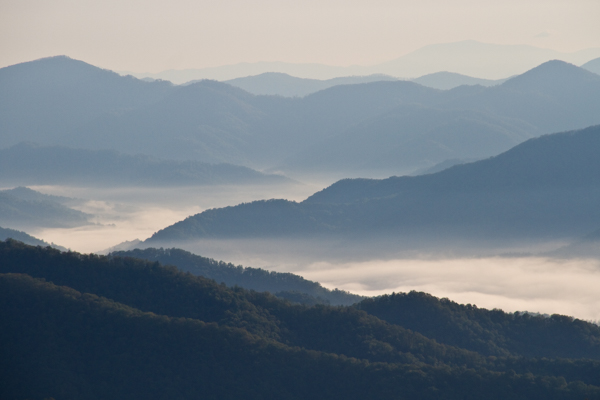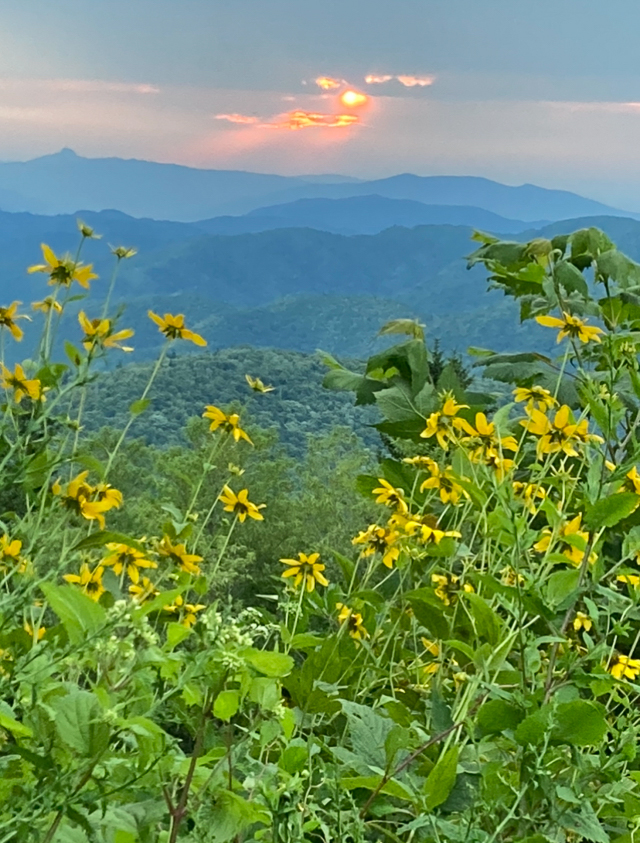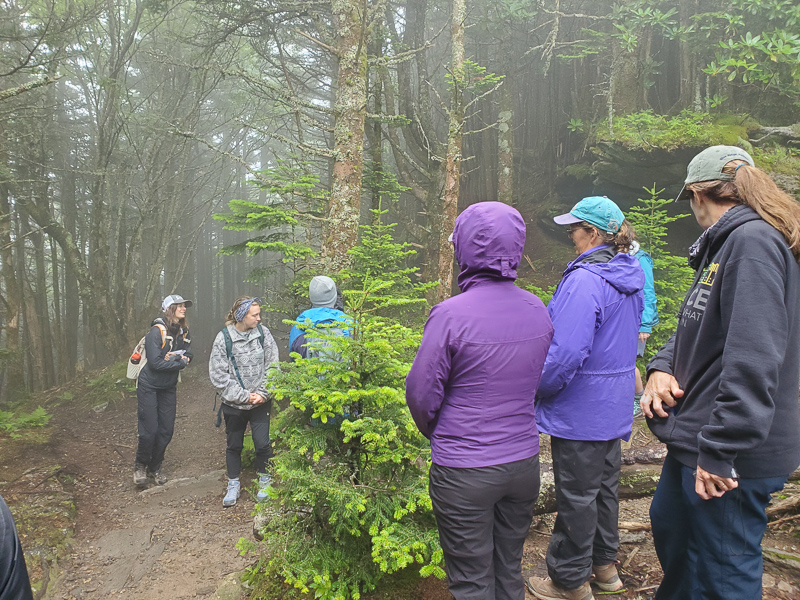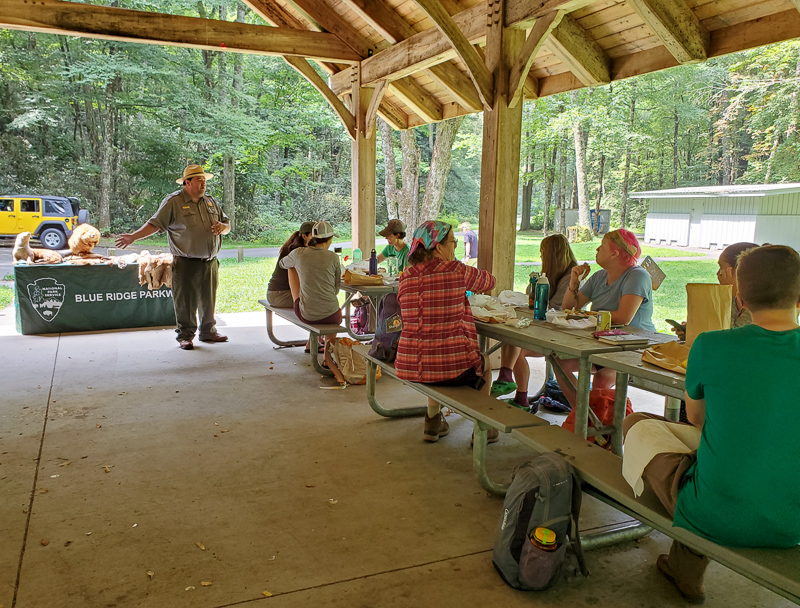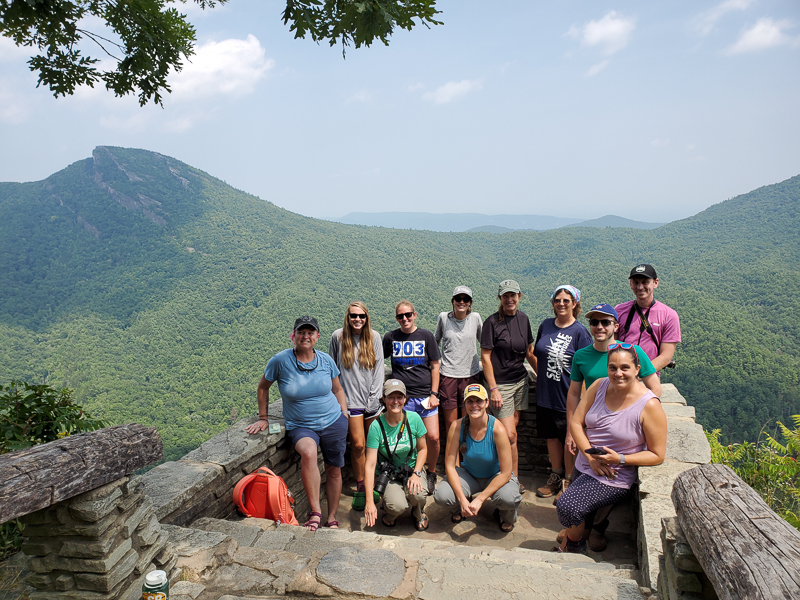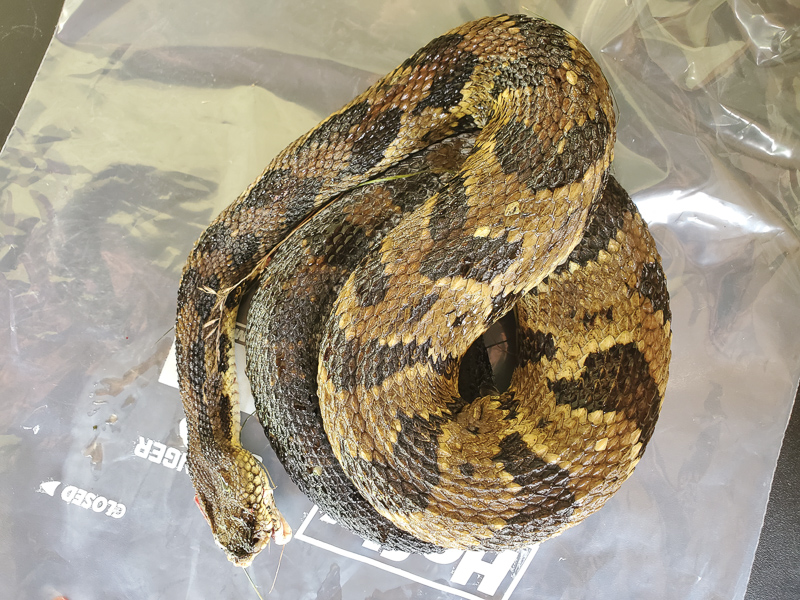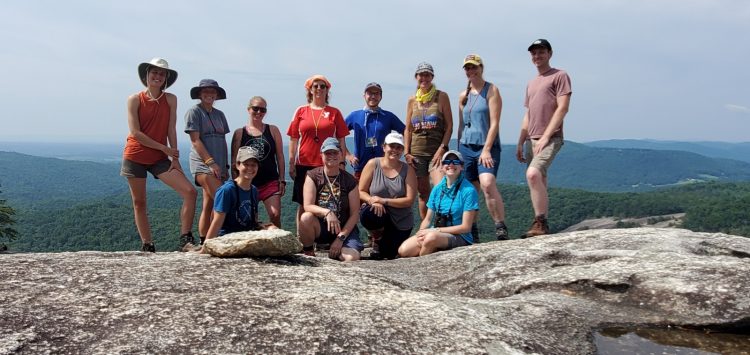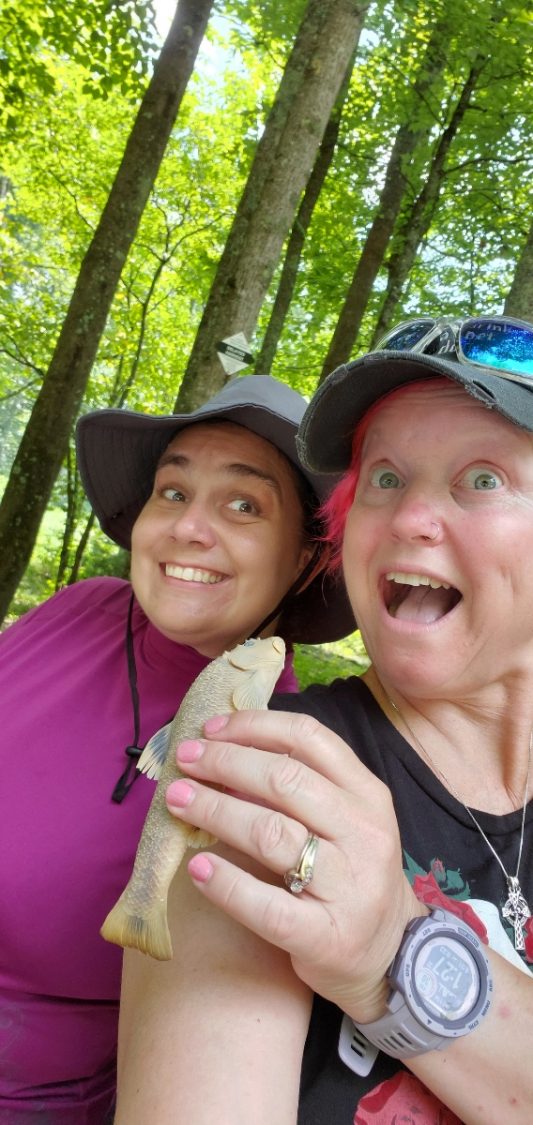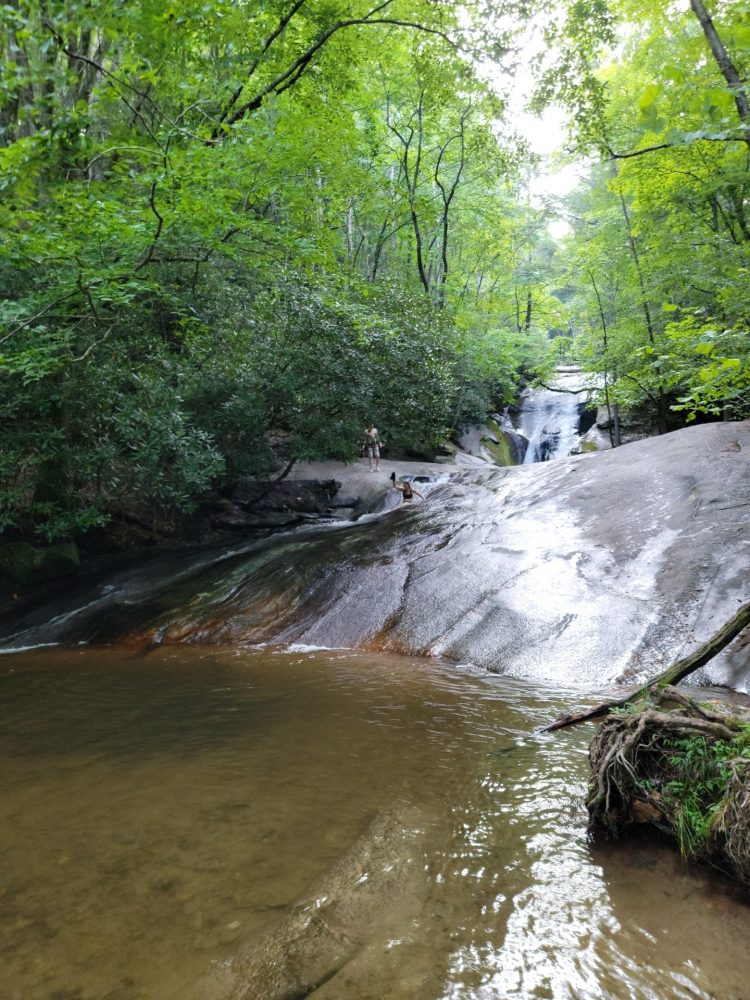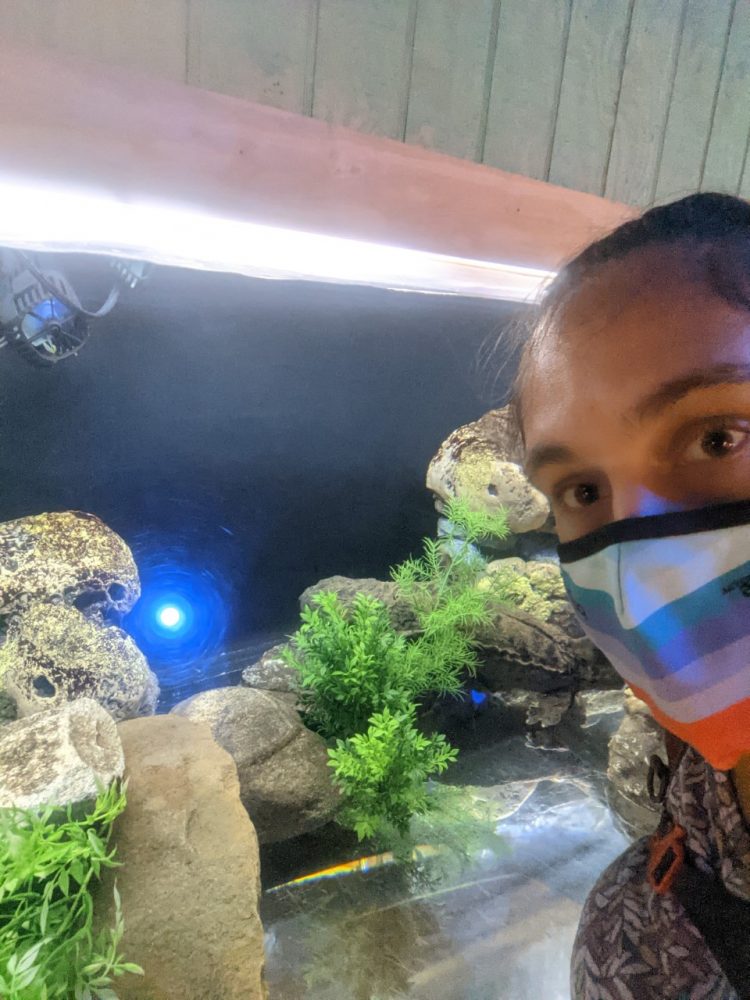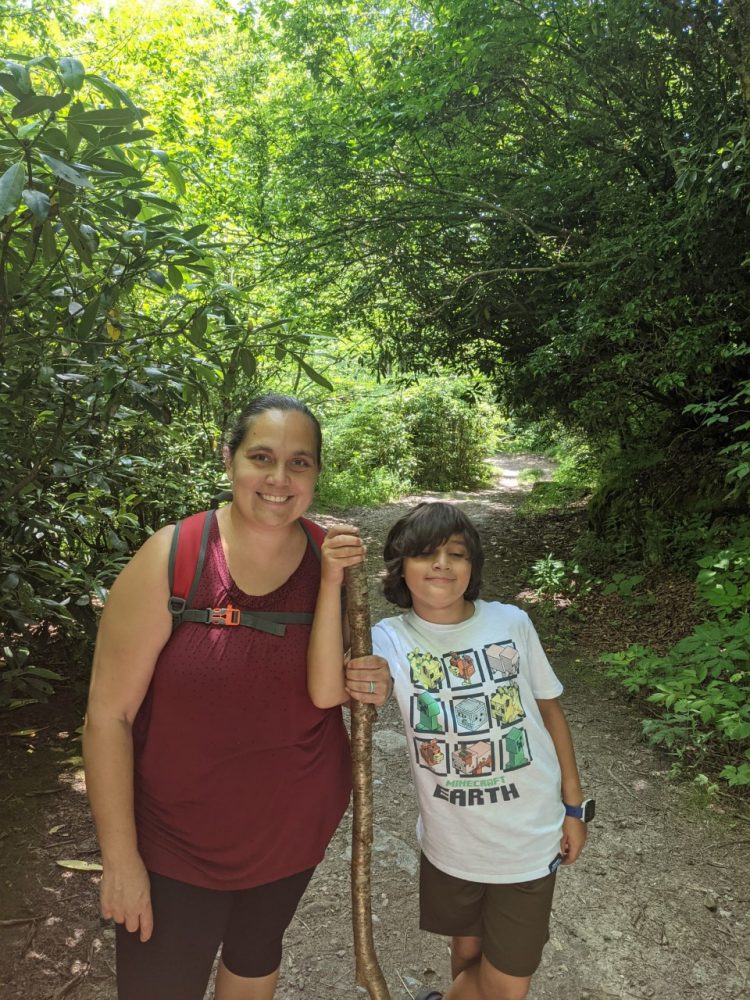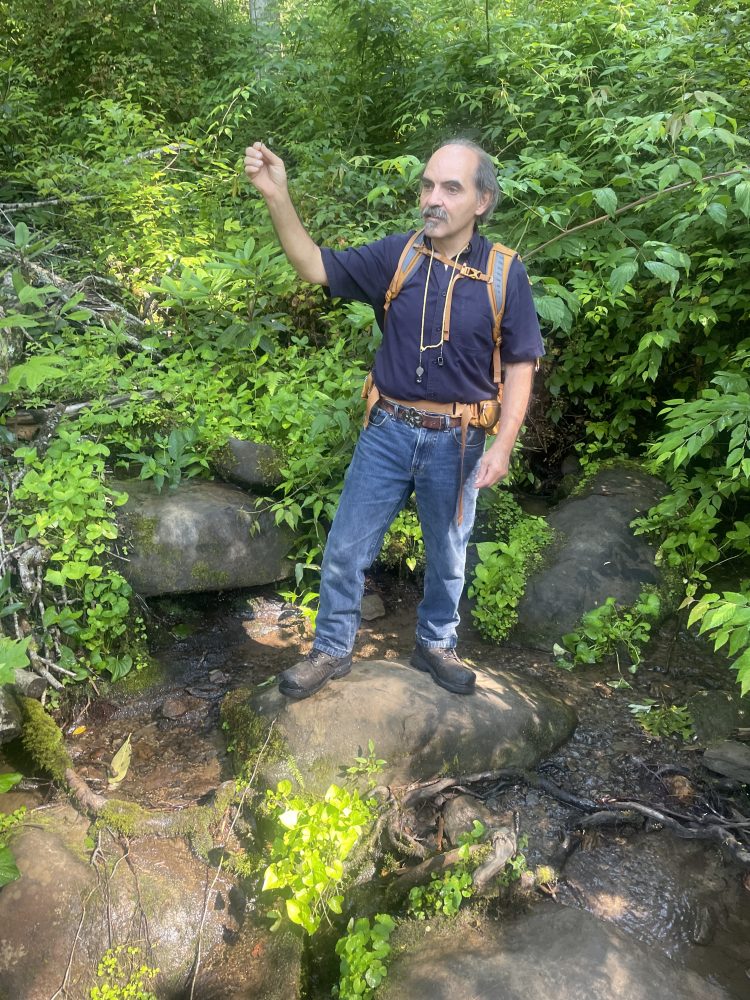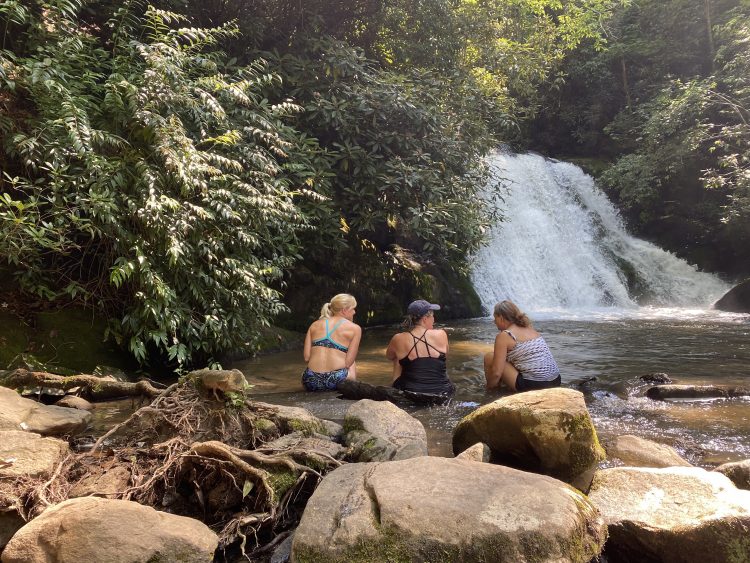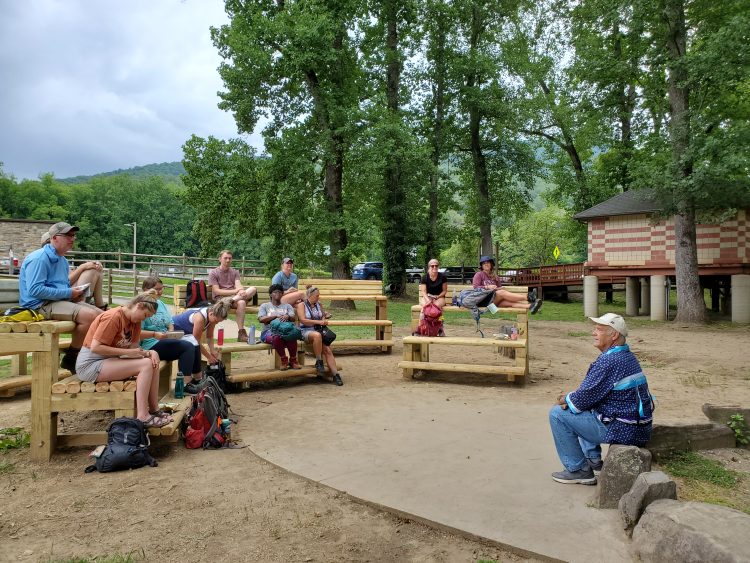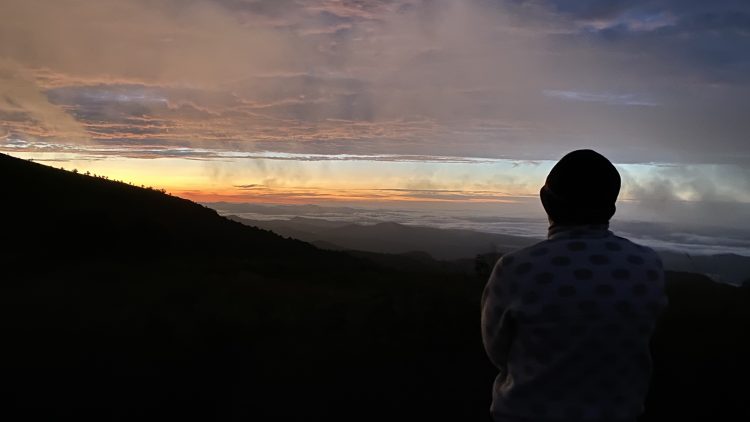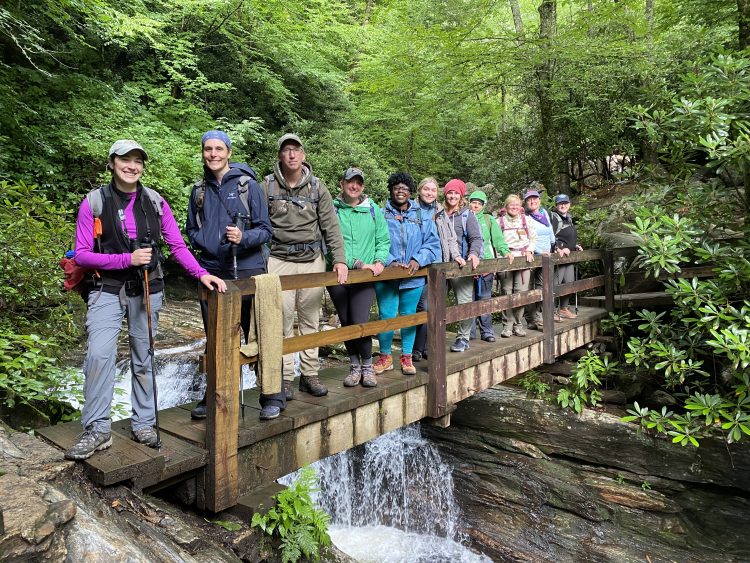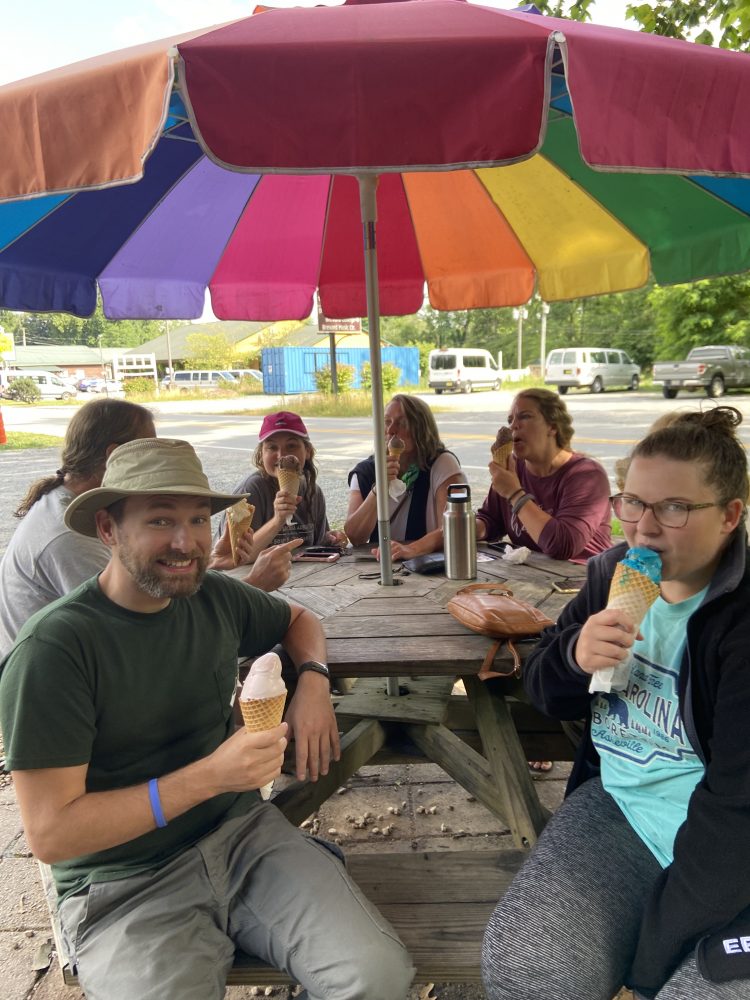“Hellbendering”
August 3, 2021 - 2 Comments
After a very rainy, peaceful sleep, we meandered to the group area for a breakfast of grits, oatmeal, assorted pastries, yogurt and creations with leftover fried chicken.
We loaded up the van to head for the Skinny Dip Falls trailhead. Along the hike, we were educated on identification of the Indian cucumber root, which has an edible root that tastes like cucumber with the texture of a carrot. It’s always beneficial to be aware of natural food elements in your forest surroundings. After a short but brisk hike to the falls, we took in the magnificent wonders of the waterfall.
We left Skinny Dip Falls and went back to camp to prepare for snorkeling in the Davidson River for a peek into the habitat of the hellbender salamander. We arrived at the Pisgah National Forest ranger station for an informational meeting with Lori Williams, a wildlife biologist with the NC Wildlife Resources Commission. She educated us on everything hellbender. We even got to meet Rocky. Rocky is an almost fifteen-year-old hellbender that has been raised in captivity and is used for educational purposes.
Following our visit with Lori and Rocky, Ben and Reid (wildlife technicians) accompanied us to the river, where we suited up in warm clothes or wetsuits and snorkeled in the frigid water. Our group goal of spotting three elusive hellbenders in the wild was accomplished.
Thankfully, we warmed up in dry clothes and continued our adventure to Dolly’s where we revelled in luscious ice cream cones. We finished our eventful day with dinner in Brevard.
We returned to camp exhausted but satiated and ready to greet tomorrow with excitement and eagerness to continue to learn from Melissa, Megan, Chris, and one another.



